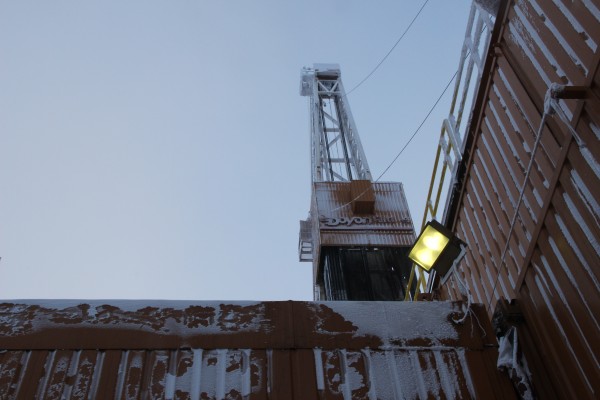
The National Petroleum Reserve Alaska – or NPR-A – was first set aside for oil production nearly a century ago. But it wasn’t until last year that the Reserve produced its first barrels: that’s when ConocoPhillips brought its CD5 unit online.
Now the company is hoping to expand production from the reserve, with a string of new drill sites pushing ever deeper into the NPR-A.
One of those projects — Greater Mooses Tooth 1 — will start construction this winter. And the Bureau of Land Management is launching an environmental review of ConocoPhillips’ most recent proposal – called Greater Mooses Tooth 2.
ConocoPhillips first proposed these drill sites over a decade ago, but the development of CD5 ran into a series of obstacles, including negotiations with the village of Nuiqsut over a road through local subsistence grounds. It took ten years to permit and build, starting production last fall.
Now, ConocoPhillips is hoping it’s full steam ahead.
The projects are like stepping stones, each reaching a little further into the National Petroleum Reserve. CD5 sits on Native corporation land right at the edge of the NPR-A. From there, the company plans to build a road to Greater Mooses Tooth 1 — or GMT-1 — which is scheduled to start construction next year.
“And GMT-2 is the next step-out in development,” said Jim Brodie, ConocoPhillips’ project manager for the NPR-A.
Like GMT-1, the GMT-2 site will be a gravel pad with a maximum of about 30 wells, sending oil by new pipelines back to ConocoPhillips’ Alpine facility – and from there, to the trans-Alaska pipeline.
Brodie said the sites are some of the company’s main priorities these days.
“In terms of new development in Alaska, the NPR-A tend to be the most attractive,” he said.
That doesn’t mean they’re cheap. ConocoPhillips officials joke that a billion dollars doesn’t go as far as it used to. The entire Alpine field was a billion dollar development in 2000. Now each new drill site costs about a billion dollars.
That’s largely because of sheer logistics – the further into the Reserve you move, the further from any existing infrastructure, and the more expensive it is.
But ConocoPhillips has also been frustrated by the pace of the permitting process. In July, Alaska’s congressional delegation sent a letter to the Secretary of the Interior, saying, essentially, get a move on.
On July 25, the Bureau of Land Management announced it would start its environmental review, the next step toward approving the project. The Bureau is currently asking the public for input on what it should study.
Stephanie Rice, the project manager for the BLM, said two areas of focus will be impacts on climate change and ensuring the project doesn’t interrupt Nuiqsut’s access to subsistence resources.
“The main subsistence resource is going to be caribou, and making sure roads and pipelines and air traffic do not interfere with caribou migration,” Rice said.
Meanwhile, some conservationists aren’t thrilled with the project. Marissa Knodel is a climate campaigner with Friends of the Earth, in Washington DC. She said the development doesn’t line up with the Obama administration’s commitments on climate change.
“The bottom line is that any new development for oil and gas, like what is being proposed in the National Petroleum Reserve, moves us completely in the opposite direction of where we need to be going in terms of a safe climate future,” Knodel said.
The state of Alaska takes the opposite view: that new oil and gas development is imperative for economic growth and state revenue. And right now, ConocoPhillips’ developments in the NPR-A are among the few potential sources of new oil for the trans-Alaska pipeline.
The public can submit comments on the proposed project here.
Rachel Waldholz covers energy and the environment for Alaska's Energy Desk, a collaboration between Alaska Public Media, KTOO in Juneau and KUCB in Unalaska. Before coming to Anchorage, she spent two years reporting for Raven Radio in Sitka. Rachel studied documentary production at the UC Berkeley Graduate School of Journalism, and her short film, A Confused War won several awards. Her work has appeared on Morning Edition, All Things Considered, and Marketplace, among other outlets.
rwaldholz (at) alaskapublic (dot) org | 907.550.8432 | About Rachel




